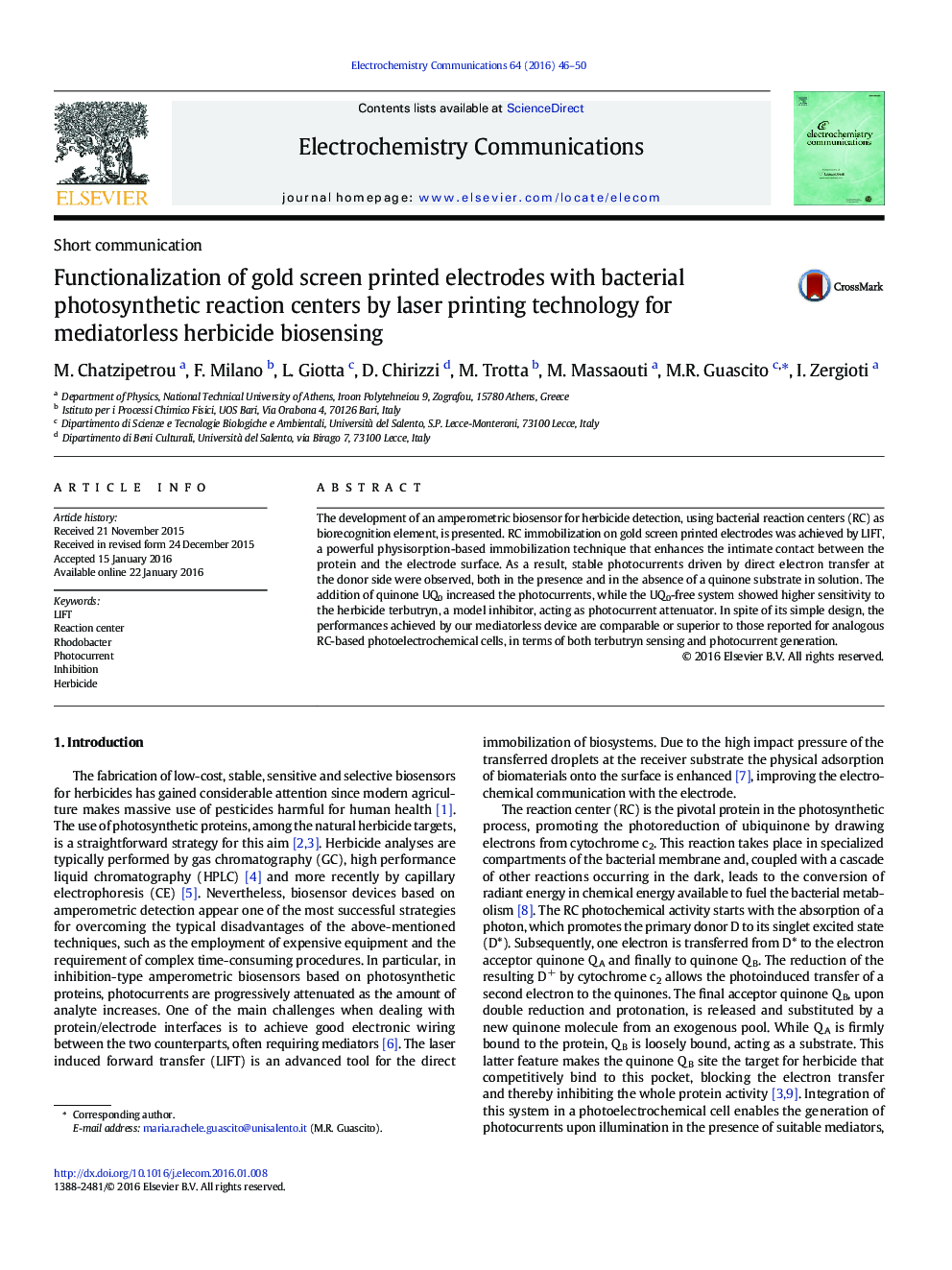| Article ID | Journal | Published Year | Pages | File Type |
|---|---|---|---|---|
| 178753 | Electrochemistry Communications | 2016 | 5 Pages |
•A bio-hybrid device able to generate cathodic photocurrents was developed.•Photosynthetic reaction centers were efficiently immobilized on gold SPE electrodes.•LIFT technique enabled the electronic wiring between electrode surface and protein.•The mediatorless system generates high currents even without quinone substrates.•Photocurrent inhibition by terbutryn shows the potential as herbicide biosensor.
The development of an amperometric biosensor for herbicide detection, using bacterial reaction centers (RC) as biorecognition element, is presented. RC immobilization on gold screen printed electrodes was achieved by LIFT, a powerful physisorption-based immobilization technique that enhances the intimate contact between the protein and the electrode surface. As a result, stable photocurrents driven by direct electron transfer at the donor side were observed, both in the presence and in the absence of a quinone substrate in solution. The addition of quinone UQ0 increased the photocurrents, while the UQ0-free system showed higher sensitivity to the herbicide terbutryn, a model inhibitor, acting as photocurrent attenuator. In spite of its simple design, the performances achieved by our mediatorless device are comparable or superior to those reported for analogous RC-based photoelectrochemical cells, in terms of both terbutryn sensing and photocurrent generation.
Graphical abstractFigure optionsDownload full-size imageDownload as PowerPoint slide
